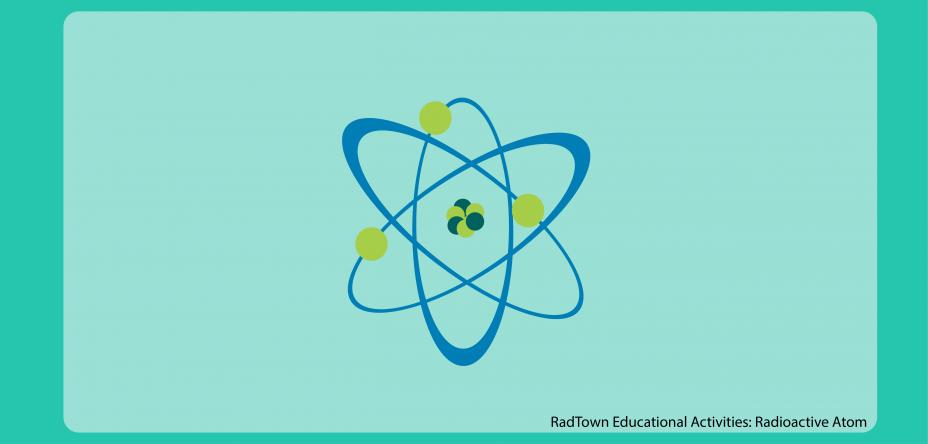When a radioactive atom decays, it becomes a different element. The amount of time that it takes one half of the atoms present to decay is called “half-life.” Every radioactive isotope has a specific half-life. Help your students understand this concept using interactive classroom activities. This activity is intended for middle and high school students.
- Objectives
- Next Generation Science Standards
- Materials and Resources
- Time
- Directions
- Common Core State Standards
- Printable Worksheets and Classroom Aids
Objectives
Students will:
- Learn about radioactive decay and decay chains.
- Demonstrate the concept of half-life.
- Calculate and chart the half-life of a given sample.
- Discuss the significance of knowing the half-life of radioactive elements.
Next Generation Science Standards
The concepts in this activity can be used to support the following science standard:
- PS1. Structure and Properties of Matter
Materials and Resources
Each italicized document title can be found at the bottom of this page, and is available for printing and distribution.
- The Radioactive Atom: Teacher Background Information
- Vocabulary Materials
- Half-Life Data Worksheet (one per student, pair or group) and Half-Life Data: Teacher Answer Key. NOTE: The Half-Life Data Worksheet is double sided.
- 12 sheets of colored paper in two different colors – 6 sheets of each color
- Student calculators (optional)
Time
45-60 minutes
Vocabulary
- Atom
- Decay chain
- Half-life
- Ionizing radiation
- Radiation
- Radioactive atom
- Radioactive decay
Directions
- Start with a vocabulary activity if students are not familiar with radiation and the terms used in this activity, or provide students with the terms and definitions.
- Ask students:
- Do radioactive materials always remain unstable (radioactive)? No. They will eventually become stable.
- How long does it take for unstable (radioactive) atoms to give off energy (radiation) and become stable or do all radioactive atoms lose energy and decay at the same rate? Radioactive elements decay at different rates from fractions of seconds to millions and billions of years.
- Provide students with the Half-Life Data Worksheet. Have them read the initial statement and form a hypothesis.
- Demonstrate the concept of half-life with the class by choosing from the following options:
- Select three volunteers. Have the volunteers stand at a distance from an easily identifiable location (e.g., a wall or the classroom door). Direct each volunteer to move at varying rates (fast, moderate and slow) to represent half-lives of different elements. For example, radon has a half-life of 3.8 days, radium has a half-life of 1600 years, and uranium has a half-life of 4.5 billion years. Direct each volunteer to walk halfway toward the identifiable location at their designated rate and stop before continuing to the next halfway point between them and the identifiable location. They will continue this process until they cannot go any farther. You can mark the halfway points with string or paper if students need guidance.
- Ask for 12 volunteers. Have the student volunteers line up in the front of the room. Provide each volunteer with two different colored sheets of paper to represent radon and polonium. Have all of the volunteers hold the radon paper out, facing the students. Have half of the volunteers (any 6 of the 12) place the polonium colored paper facing out to represent the half of the atoms that transferred into polonium. Then have the next half (3 of the 6 volunteers showing radon) place the polonium paper out, facing the students. In the next half-life, have one volunteer place the polonium paper out front and have another volunteer show half radon and half polonium by folding one or both of the papers in half. The remaining volunteer should then place the polonium paper out front and the volunteer showing half radon and half polonium should fold one or both papers to represent three-fourths radon and one-fourth polonium.
- Show an online video or demonstration of half-life. Sources may include TeacherTube, other allowed Internet sources, or Colorado University’s online applet that demonstrates half-life and radioactive decay.
- Direct students to complete the remainder of the Half-Life Data Worksheet. The use of calculators is optional.
- Ask students to share their observations and conclusions from the activity. A Half-Life Data: Teacher Answer Key is provided.
Common Core State Standards (CCSS)
The concepts in the Half-Life activity align with the following:
CCSS Language Arts Standards for Literacy in History/Social Studies, Science, & Technical Subjects:
- CSSS.ELA-Literacy.SL.6-12.1 Comprehension and Collaboration
- CSSS.ELA-Literacy.RST.6-12.4 Craft and Structure
- CSSS.ELA-Literacy.RST.6-12.7 Integration of Knowledge and Ideas
- CCSS.ELA-Literacy.WHST.6-12.1 Text Types and Purposes
- CSSS.ELA-Literacy.WHST.6-12.9 Research to Build and Present Knowledge
CCSS Mathematics Standards:
- CCSS.MATH.PRACTICE.MP1
- CCSS.MATH.PRACTICE.MP2
Printable Worksheets and Classroom Aids
You may need a PDF reader to view some of the files on this page. See EPA’s About PDF page to learn more.- Half-Life Data Worksheet (PDF)(2 pp, 360 K)
- Half-Life Data: Teacher Answer Key (PDF)(2 pp, 247 K)

